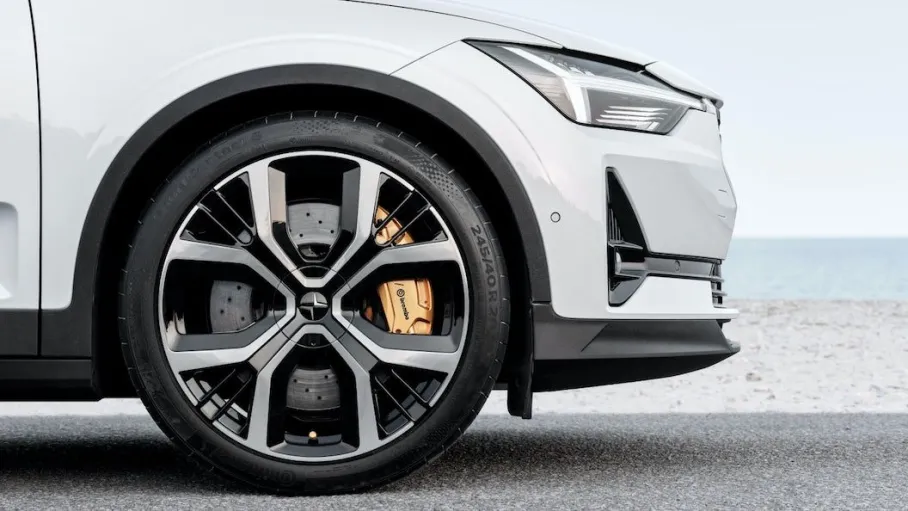The Polestar 2 Has Had This Feature Since The Beginning, That Tesla Still Doesn't Have
The Polestar 2 has a feature that most Tesla EVs are missing.

Electric cars have just about the coolest technologies on the road. Among them are all electric power trains, state of the art “self-driving” and even regenerative braking to further the efficiency of the vehicle. This regenerative braking system introduced the ability to have one pedal driving become a reality. To understand how one pedal driving works, you need to know what regenerative braking is.
What is Regenerative Braking?
Internal combustion engine vehicles use traditional braking systems that turn the kinetic force of the vehicle's momentum into heat via the brakes in order to slow down the vehicle. That excess heat is wasted potential energy, thus making the means of braking a wasteful task.
In electric vehicles, when the accelerator is released, the vehicle will slowly come to a halt. What is happening is that the energy from your spinning wheels is utilized to reverse the flow of electricity in regenerative braking. Instead of passing energy from the electric motor(s) to the wheels, it is sent to the battery, essentially charging the battery rather than squandering energy as traditional brake systems do.
What is One Pedal Driving?
Since releasing the accelerator means the EV will eventually slow down, that means you are almost able to completely ignore the brake pedal in most situations. Once you get used to the stopping aggression of your specific car, one pedal driving becomes second nature, allowing you to only need to release the accelerator when there is a need to decelerate.
Although the brake pedal is rarely used in EVs, it is certainly still needed as regen braking is not available all the time. In situations where braking is limited due to battery temperature or state of charge, which would then require you to apply the brakes manually. This is very noticeable when driving a Tesla EV. For example, when the EV is charged to 100% you will get a warning stating that regen braking is limited. This is due to the fact that the battery is at capacity, so charging the battery via regen braking will not work, nor will the vehicle slow you down as much as you would expect. This could cause safety issues when stopping. That is where a blended braking system can be introduced.
What is Blended Braking

Blended braking is when the vehicle automatically applies the physical brakes during one pedal driving to compensate for the uneven braking due to regen limitations. This provides a more smooth experience when braking since you will always have a predictable amount of stopping force all the time.
This feature is unavailable in most Tesla EVs. They are currently testing it with select vehicles, however. The Polestar 2 has had this feature since the beginning. When driving the Polestar 2, releasing the accelerator will bring the car to a complete stop by reversing the torque direction of the electric motors and activating the disc brakes when necessary. This provides a smooth and predictable braking experience for the driver every time.
Customizable One Pedal Driving
Not only does the Polestar 2 provide predictable and smooth one pedal driving. They also offer customizable one pedal driving.
Using just one pedal to accelerate or brake soon becomes second nature. To make it even more effortless, Polestar 2 offers the option to adjust the braking intensity to personal preferences and requirements.Choose "Low" for more coasting on the highway, "Standard" for more stopping power in busy city traffic or "Off" if you prefer to drive with two pedals.